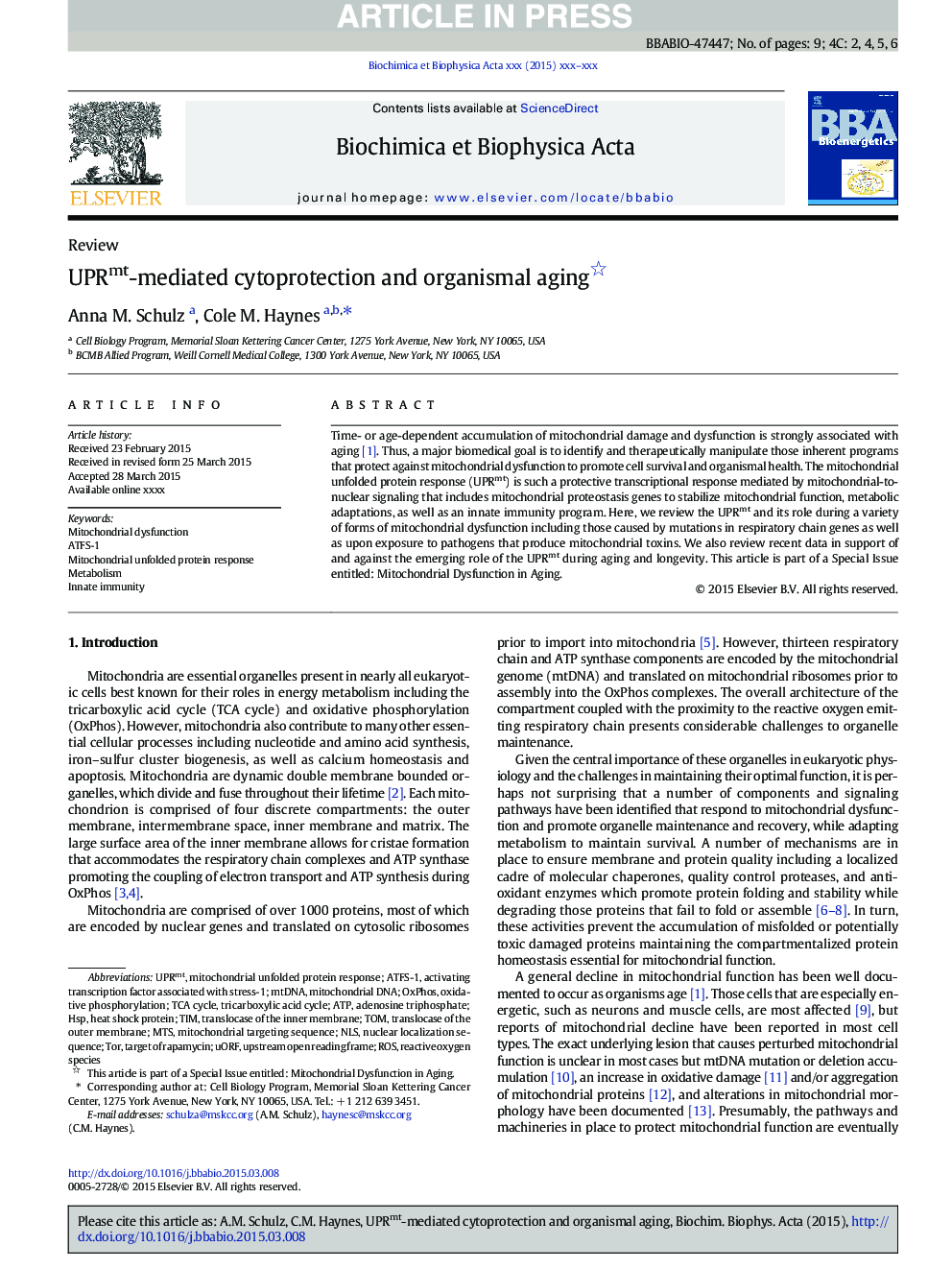| Article ID | Journal | Published Year | Pages | File Type |
|---|---|---|---|---|
| 10795362 | Biochimica et Biophysica Acta (BBA) - Bioenergetics | 2015 | 9 Pages |
Abstract
Time- or age-dependent accumulation of mitochondrial damage and dysfunction is strongly associated with aging [1]. Thus, a major biomedical goal is to identify and therapeutically manipulate those inherent programs that protect against mitochondrial dysfunction to promote cell survival and organismal health. The mitochondrial unfolded protein response (UPRmt) is such a protective transcriptional response mediated by mitochondrial-to-nuclear signaling that includes mitochondrial proteostasis genes to stabilize mitochondrial function, metabolic adaptations, as well as an innate immunity program. Here, we review the UPRmt and its role during a variety of forms of mitochondrial dysfunction including those caused by mutations in respiratory chain genes as well as upon exposure to pathogens that produce mitochondrial toxins. We also review recent data in support of and against the emerging role of the UPRmt during aging and longevity. This article is part of a Special Issue entitled: Mitochondrial Dysfunction in Aging.
Keywords
MTSHspTORNLSToMUPRmtATFS-1uORFTIMOXPHOSMitochondrial DNAROSAdenosine TriphosphateATPMitochondrial dysfunctiontranslocase of the outer membranetranslocase of the inner membraneInnate immunitymitochondrial targeting sequencenuclear localization sequencemtDNAupstream open reading frameOxidative phosphorylationMetabolismtarget of rapamycinmitochondrial unfolded protein responseHeat shock proteinTCA cycletricarboxylic acid cycleReactive oxygen species
Related Topics
Life Sciences
Agricultural and Biological Sciences
Plant Science
Authors
Anna M. Schulz, Cole M. Haynes,
